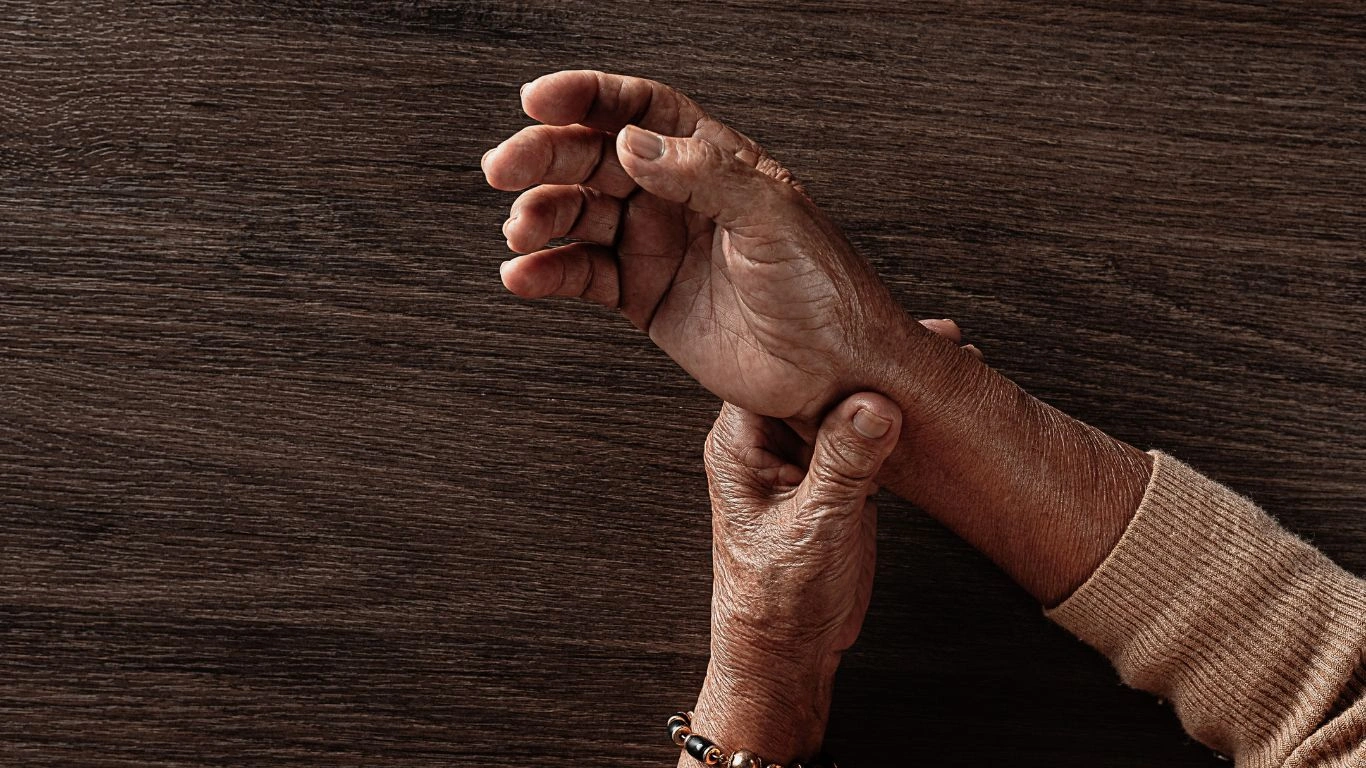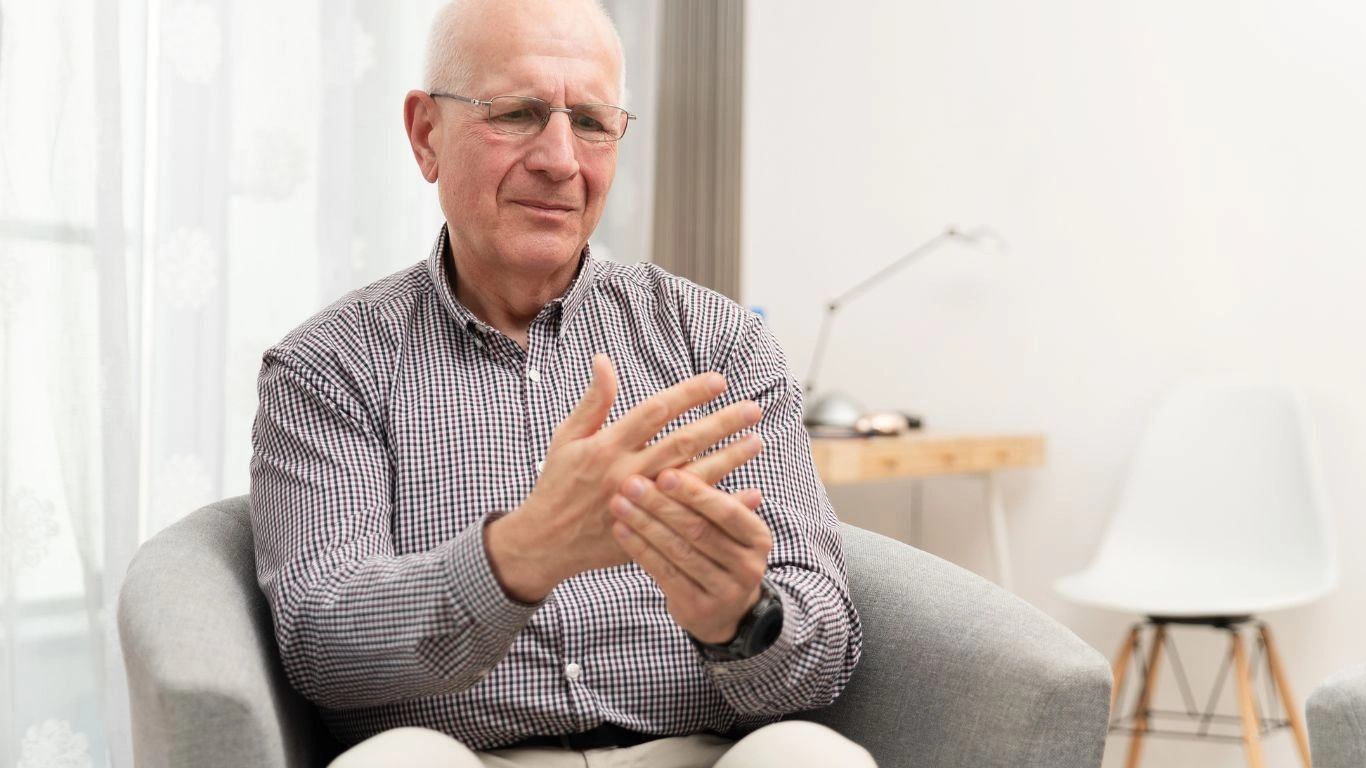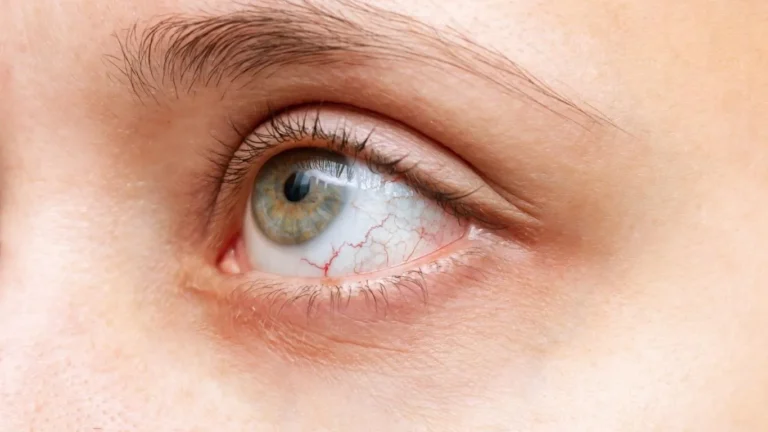How to Live with Rheumatoid Arthritis and Manage Fatigue Effectively
Living with rheumatoid arthritis (RA) can feel like navigating a constant battle, especially when managing fatigue. As someone who’s spent years working with individuals who are facing the challenges of RA, I can tell you that the journey is not always straightforward, but it’s definitely one that’s worth understanding and mastering. If you’ve been asking yourself “how to live with rheumatoid arthritis and manage fatigue,” you’re in the right place. It’s one of the toughest parts of RA, and it often seems like an invisible enemy that sneaks up on you, making everyday tasks feel more exhausting than they should. But don’t worry—there are ways to manage it effectively.
What Is Rheumatoid Arthritis Fatigue?
Fatigue is one of the most common yet least understood symptoms of rheumatoid arthritis. It’s different from regular tiredness. When you have RA, your body’s immune system attacks healthy joints, causing inflammation. This inflammation doesn’t just affect the joints but can also lead to general body fatigue that often feels unrelenting. The fatigue can be so severe that even getting out of bed or doing basic daily tasks can seem overwhelming. If you’re living with RA, you might find yourself feeling more exhausted than usual, even after a full night’s sleep.

Why Does RA Cause Such Intense Fatigue?
While the exact cause of RA fatigue isn’t fully understood, there are several contributing factors that can make you feel drained:
- Inflammation: When your immune system is attacking your joints, your body is constantly in a state of inflammation. This process requires a lot of energy, leaving you feeling wiped out.
- Pain: The constant pain you may experience with RA can also contribute to fatigue. Pain can disrupt your sleep, making it harder to feel rested and ready to face the day.
- Sleep Disturbances: As if living with chronic pain weren’t enough, many RA patients struggle with sleep issues. Joint pain, night sweats, and medication side effects all play a role in this.
- Depression and Mental Health: Chronic conditions like RA can take a toll on mental health. Fatigue is often linked to emotional strain, and stress can drain your energy even more.
It’s important to note that RA fatigue isn’t just “in your head.” It’s a very real, very physical symptom of the disease that can significantly impact your quality of life. But here’s the good news: by understanding the causes and taking proactive steps, it’s possible to manage and even minimize RA fatigue.
Managing RA Fatigue: Practical Tips
Managing fatigue doesn’t happen overnight, but with patience and consistency, you can make a noticeable difference. I’ve seen many of my patients take control of their fatigue by implementing small, manageable lifestyle changes that work for them. Here’s where we’ll start: lifestyle and self-care are key!
1. Prioritize Sleep
Quality sleep is often underestimated when it comes to managing RA fatigue. Chronic pain and discomfort can lead to restless nights, but it’s crucial to aim for 7-9 hours of restful sleep each night. I always recommend creating a bedtime routine that’s relaxing—this could be a warm bath, gentle stretches, or some calming music to help signal your body that it’s time to wind down. Try to keep your sleep environment as comfortable as possible, with supportive pillows, a cool room temperature, and minimal distractions.

2. Keep Moving (But Pace Yourself)
I know, it sounds counterintuitive. On days when you’re feeling exhausted, the last thing you might want to do is move. But gentle, low-impact exercise is a great way to manage fatigue in the long term. Regular movement can actually help increase your energy levels and improve your overall mood by reducing the physical and mental burden of RA.
Focus on activities that are easy on your joints, like swimming, walking, or cycling. Yoga and stretching exercises can also be helpful in maintaining flexibility and reducing stiffness. The key is pacing yourself—don’t overdo it! Start small and gradually increase your activity levels based on how your body feels. Remember, quality over quantity.
3. Eat a RA-Friendly Diet
What you eat can play a huge role in how you feel day-to-day. A balanced, nutrient-rich diet can help reduce inflammation and give your body the fuel it needs to combat fatigue. I often tell my patients to focus on anti-inflammatory foods, like:
- Omega-3 rich foods (think salmon, chia seeds, and walnuts)
- Fruits and vegetables (particularly those high in antioxidants, like berries, spinach, and kale)
- Whole grains (like quinoa and brown rice)
- Healthy fats (avocados, olive oil, and nuts)
It’s also essential to stay hydrated. Dehydration can worsen fatigue, so make sure you’re drinking plenty of water throughout the day.
4. Manage Stress
Stress can make fatigue even worse, and living with RA can be inherently stressful at times. That’s why finding ways to relax and de-stress is vital. Simple techniques like deep breathing, mindfulness, or even just taking a few minutes each day to practice gratitude can have a significant impact on your energy levels. Don’t forget to take breaks throughout the day to step away from anything that might be causing you stress—whether that’s work, family commitments, or simply overthinking about your health.
Managing Your Medications Effectively
For many people with RA, managing medications is a big part of reducing fatigue. Medications like disease-modifying antirheumatic drugs (DMARDs), biologics, and corticosteroids are designed to control inflammation and alleviate symptoms of RA, including fatigue. If you’re not feeling the benefits of your current medication or are experiencing side effects, it’s essential to talk with your rheumatologist. Sometimes, finding the right medication or adjusting your dosage can make a world of difference.

Remember, managing RA fatigue is a journey, not a destination. It takes time, trial and error, and a lot of self-compassion. But with the right mindset and approach, it’s entirely possible to regain control of your energy levels and enjoy a better quality of life.
Understanding the Role of Support Networks
When you’re dealing with rheumatoid arthritis (RA), fatigue doesn’t just affect you physically—it can also take a toll on your mental health. That’s why having a strong support network is essential for coping with both the emotional and physical challenges of RA. In my years of working with patients, I’ve seen firsthand how much having a solid support system can make a difference. Whether it’s friends, family, or other individuals living with RA, the right support can help you feel less isolated and more empowered to manage your condition.

1. The Importance of Social Support
One of the most effective ways to reduce fatigue is by not facing it alone. Many people with RA often experience a sense of isolation, especially when fatigue makes socializing or even leaving the house feel impossible. But reaching out to others—whether it’s talking to a close friend or connecting with an online community—can help lighten the emotional load. Sharing your experiences with someone who understands can reduce feelings of loneliness and bring a sense of relief.
In addition to emotional support, a solid social circle can also help by offering practical assistance. Sometimes, just having someone lend a hand with household chores or running errands can help conserve your energy for other activities. So, don’t be afraid to ask for help when you need it—your friends and family care about you and will likely be happy to pitch in.
2. Online Communities and Support Groups
If you don’t have a strong support system in your immediate circle, don’t worry—you’re not alone. The internet has made it easier than ever to connect with people who understand exactly what you’re going through. Online communities dedicated to RA, such as forums or Facebook groups, provide a wealth of information, shared experiences, and even emotional support. I’ve seen countless patients find solace and understanding in these virtual spaces, where they can discuss coping strategies, recommend resources, or simply vent.
Another option is joining a formal support group. These groups often meet in person or virtually and provide a safe space to talk about challenges, share tips, and receive guidance. Many hospitals or nonprofit organizations offer these groups, which can be especially helpful if you’re looking for a more structured approach to connecting with others.
Exercise and Fatigue: What Works and What Doesn’t
Earlier, we touched on the importance of movement, but let’s dive a little deeper into how exercise can be one of your best tools for managing fatigue. If you’re like many people with RA, exercise might seem like a daunting task—especially when your joints hurt and you’re already feeling exhausted. However, the right type of exercise can actually reduce fatigue and improve overall energy levels. The key is to start small and find what works best for your body.

1. Low-Impact Activities
One of the best ways to stay active without putting too much strain on your joints is to focus on low-impact activities. Swimming, water aerobics, and cycling are all great options. These activities provide a full-body workout but minimize the stress on your joints, making them ideal for people with RA. They also help improve circulation, reduce stiffness, and build muscle strength, which can ultimately reduce fatigue over time.
If you’re not near a pool or don’t enjoy swimming, walking is a simple yet effective alternative. Start with short walks and gradually increase the time as your body allows. Walking can also help improve your mood and mental health, which is just as important as physical health when managing RA fatigue.
2. Strength Training
Don’t be intimidated by strength training. It doesn’t mean you need to lift heavy weights or follow a strict gym routine. Simple exercises that target specific muscle groups can help increase your strength, which can make everyday activities feel less exhausting. Strengthening the muscles around your joints helps reduce the load on your joints, which may decrease pain and inflammation over time.
Resistance bands are an excellent tool for strength training because they’re easy to use, gentle on the joints, and highly effective. I always encourage my patients to try them out—especially if you’re new to strength training. It’s also important to listen to your body and take breaks when necessary. You don’t need to push yourself to the limit to reap the benefits.
3. Gentle Yoga and Stretching
Stretching and gentle yoga are fantastic for improving flexibility, mobility, and reducing muscle tension. These activities are especially beneficial for people with RA, as they can help alleviate stiffness and promote relaxation. In fact, yoga can be a powerful tool to manage fatigue because it combines both physical movement and mindfulness.
Many yoga classes are specifically tailored for individuals with RA, focusing on gentle poses and stretches that help ease joint pain without overstraining. If you’re new to yoga, look for classes or online videos that cater to beginners with RA. Yoga can help reduce inflammation, improve sleep, and ease mental stress—all of which are key factors in managing RA-related fatigue.
Mind-Body Techniques to Combat Fatigue
When fatigue from RA is particularly overwhelming, mind-body techniques like meditation and mindfulness can play a crucial role in helping you regain your energy. These techniques focus on calming your mind, reducing stress, and improving your overall well-being. Research has shown that mindfulness and relaxation exercises can not only reduce fatigue but also help manage pain and anxiety, which can make your overall experience with RA more manageable.

1. Meditation and Deep Breathing
One of the most effective techniques for managing stress and fatigue is meditation. Taking just 10-15 minutes a day to focus on your breath can work wonders for reducing anxiety and promoting relaxation. Deep breathing exercises are also helpful—slow, intentional breathing helps activate the parasympathetic nervous system, which is responsible for calming the body.
In my experience, many people find that practicing mindfulness and meditation consistently helps them manage not just fatigue, but also the mental strain that comes with chronic illness. Apps like Headspace or Calm are great tools to get started, offering guided meditations specifically for stress relief and relaxation.
2. Mindfulness-Based Stress Reduction (MBSR)
Mindfulness-Based Stress Reduction (MBSR) is a structured program that combines mindfulness meditation and yoga to help reduce stress, anxiety, and fatigue. Many of my patients have reported significant improvements in their energy levels and mental well-being after participating in MBSR programs. These programs are often offered in hospitals or wellness centers and can be a great way to learn how to manage stress and fatigue in a more holistic way.
Using a combination of these techniques can give you more control over your fatigue, helping you to manage both the physical and mental aspects of RA. It’s all about finding what works for you—there’s no one-size-fits-all approach. The journey may take time, but with the right tools and strategies, you can manage fatigue and feel more energized in your day-to-day life.
Staying Active Without Overdoing It
When you’re managing rheumatoid arthritis (RA) and battling fatigue, the challenge isn’t just about staying active; it’s about striking a balance. Too much activity can lead to a flare-up, while too little can lead to increased stiffness and fatigue. As someone who works with patients dealing with RA, I can tell you firsthand that finding the sweet spot can make all the difference. The goal is to stay active without overexerting yourself—something I call the “sweet spot” approach.

1. Listen to Your Body
One of the key things I encourage people with RA to remember is that listening to your body is absolutely crucial. RA affects everyone differently, and no two days are the same. Some days, you’ll feel energized enough to take on a full walk or maybe even a light workout. Other days, fatigue will hit hard, and the best thing you can do is give yourself permission to rest. I always say: “It’s okay to take a break when your body tells you to.”
Pay attention to signs of overexertion. If your joints start feeling more inflamed, or if you notice an increase in pain or swelling, it may be time to scale back and rest. Conversely, if you’re not feeling sore after a workout, you might be able to increase the intensity or duration of your activity. It’s all about finding the right rhythm for yourself.
2. Incorporating Short, Frequent Sessions
Instead of forcing yourself to get through a long, intense workout in one go, try breaking up your physical activity into shorter, more manageable sessions throughout the day. For example, you might take a 10-minute walk in the morning, stretch during lunch, and then do some gentle yoga before bed. These mini sessions are far less likely to overwhelm your body, and you’ll still experience the benefits of staying active—without triggering a fatigue spiral.
I’ve found this method works incredibly well for many of my patients. It allows them to stay active, reduce stiffness, and prevent the exhaustion that comes from overdoing it. And let’s face it, some days even a 10-minute walk can feel like a victory!
Reevaluating Your Goals: A New Approach to RA and Fatigue
When you’re living with RA and fatigue seems like your constant companion, it’s important to rethink what it means to “achieve” a healthy lifestyle. In my experience, many people with RA can sometimes push themselves too hard, striving for goals that might not be realistic on certain days. The key to managing fatigue is understanding that your goals might need to be fluid, depending on your energy levels on any given day.

1. Set Flexible, Realistic Goals
Rather than aiming for a fixed routine that requires a lot of energy, try setting smaller, more flexible goals. On days when you’re feeling more fatigued, you might focus on gentle movement or stretches rather than intense exercise. On days when your energy is up, you can tackle slightly more strenuous activities. Flexibility is key to making sure you don’t feel defeated when your energy is low.
In my personal experience, many of my patients find that having a list of “achievable” goals, instead of a rigid to-do list, helps them feel more in control of their day. You could start with small, manageable tasks like walking for 10 minutes or stretching for 5 minutes. Over time, as you build your strength and endurance, you can increase those goals gradually.
2. Embrace the Concept of “Good Enough”
Sometimes, the best way to manage RA-related fatigue is to shift your mindset from perfection to progress. Many people living with chronic conditions feel pressured to “push through” and achieve more than their bodies are capable of. This often leads to overexertion and, ultimately, burnout. I encourage my patients to let go of perfectionism and accept that some days, doing the best you can may look different than it did the day before.
For instance, if you can’t meet your typical exercise goal one day due to fatigue, that’s okay! It doesn’t mean you’ve failed—it means you’re listening to your body and giving it what it needs. Remember, any movement is better than no movement, and sometimes simply resting and allowing your body to recover is the best thing you can do.
Exploring Alternative Therapies for Fatigue Management
While traditional treatments like medication and exercise are essential, many people with RA also find relief from fatigue through alternative therapies. These therapies, which can be used alongside conventional treatments, may help you feel better both physically and mentally. I’ve worked with several patients who have found great success with these complementary approaches, so I think they’re worth exploring if you haven’t already.
1. Acupuncture and Acupressure
Acupuncture is an ancient practice that involves inserting thin needles into specific points on the body. Many RA patients report experiencing relief from pain and fatigue after acupuncture sessions. The theory behind acupuncture is that it helps stimulate the body’s natural healing processes and improve energy flow.
Acupressure, which is similar to acupuncture but uses pressure instead of needles, is another great option. You can learn basic acupressure techniques to help alleviate fatigue and promote relaxation at home. I’ve had patients tell me that regular acupressure sessions help them feel more energized and less stressed, which contributes to better fatigue management in the long run.
2. Massage Therapy
Massage therapy isn’t just a luxury—it’s a practical tool for managing RA-related fatigue. Gentle, targeted massage can help relieve muscle tension, reduce inflammation, and promote relaxation. Many of my patients find that incorporating regular massage therapy sessions into their routine helps alleviate joint stiffness and improves their sleep quality, which in turn reduces fatigue. It’s important to choose a massage therapist who is familiar with RA and can work around your specific needs and limitations.
3. CBD and Other Natural Remedies
CBD (cannabidiol), which is derived from hemp, has gained popularity in recent years for its potential to reduce pain and inflammation. While research is still ongoing, many people with RA have found CBD products—such as oils, balms, and capsules—to be helpful in reducing both pain and fatigue. It’s important to speak with your healthcare provider before incorporating CBD into your routine to ensure it’s safe for you.
Other natural remedies, such as turmeric, ginger, and omega-3 supplements, are often recommended to help reduce inflammation and improve overall energy levels. Again, consult with your doctor to find the best options for your individual needs.
References
- Health Usias – Comprehensive RA Information
- Rheumatoid Arthritis Organization
- Mayo Clinic – Rheumatoid Arthritis Overview
Disclaimer
The information provided in this article is intended for informational purposes only and should not be construed as medical advice. Please consult with your healthcare provider before making any changes to your treatment or lifestyle. Always seek the advice of your physician or other qualified health provider with any questions you may have regarding a medical condition.

Tarra Nugroho is a dedicated Nurse Practitioner with a strong foundation in family and preventive care. She brings both compassion and clinical expertise to her practice, focusing on patient-centered care and health education. As a contributor to Healthusias.com, Tarra translates medical knowledge into clear, empowering articles on topics like women’s health, chronic disease management, and lifestyle medicine. Her mission is simple: help people feel seen, heard, and informed—both in the clinic and through the content she creates. When she’s not caring for patients, Tarra enjoys weekend hikes, plant-based cooking, and curling up with a good health podcast.






